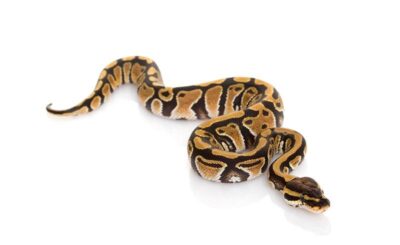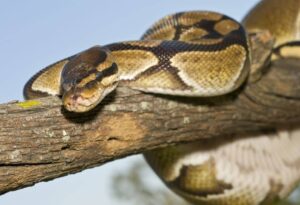Curiosity about the compatibility of different pets often arises among animal enthusiasts, and one question that frequently surfaces is, “Can a ball python kill a cat?” The juxtaposition of a seemingly docile snake species, like the ball python, with a common household pet, the cat, sparks intrigue and concern.
In this article, we aim to delve into the dynamics between these two diverse creatures, addressing the factors that influence their interactions and dispelling any misconceptions that may surround the potential threat a ball python may pose to a cat.
Can a ball python kill a cat?

While it’s not common for a ball python to pose a significant threat to a cat, it’s essential to exercise caution when keeping different pets together. Ball pythons are generally non-venomous constrictors and are not known for attacking larger animals like cats.
However, there are a few factors to consider:
- Size Difference: Adult ball pythons are usually not large enough to overpower and constrict a full-grown cat. However, if the snake is exceptionally large or the cat is very small, there could be a risk.
- Stress and Aggression: Both ball pythons and cats may become stressed or aggressive in certain situations. Stress can lead to defensive behaviors, so it’s crucial to provide a suitable environment for each pet.
- Supervision: If you decide to keep a ball python and a cat in the same household, always supervise their interactions. Never leave them alone together, especially if it’s a new or unfamiliar situation.
- Individual Behavior: The behavior of individual animals can vary. Some cats may be curious and unafraid of snakes, while others may be scared or aggressive. Similarly, some ball pythons may be more defensive than others.
To minimize potential risks, it’s essential to create a safe and controlled environment for both the ball python and the cat. Always consult with experienced reptile and pet owners or veterinarians for advice tailored to your specific situation. Keep in mind that the well-being of both animals should be a top priority.


